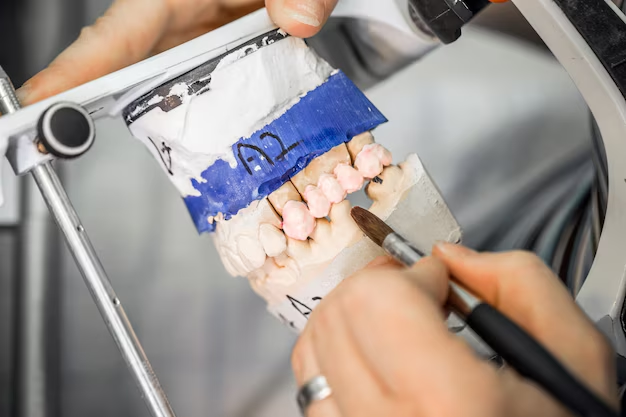Understanding the Cost of Dental Partials: A Comprehensive Guide
Navigating the world of dental care can sometimes be daunting, especially when it comes to understanding costs. Among the various options for tooth replacement, dental partials are a popular choice. If you're considering them, you might be wondering: how much do dental partials really cost? This guide will explore the costs involved, factors affecting those costs, and the benefits of choosing dental partials. We'll also take a look at related considerations and provide practical tips for making an informed decision.
What Are Dental Partials?
Dental partials, or partial dentures, are removable appliances used to replace one or more missing teeth. They provide a non-invasive solution to restore functionality and aesthetics to your smile. Partials are designed to fit snugly around your remaining natural teeth, which helps keep them secure.
Types of Dental Partials
Different types of partial dentures suit various needs and budgets. Here are the main types:
- Acrylic Partials: These are often the most affordable option. The base is made of acrylic resin, and they usually include metal clasps.
- Metal-based Partials: Usually made with a cobalt-chromium framework, these offer a more stable and durable fit.
- Flexible Partials: Made from a thermoplastic material, they offer comfort and a more natural appearance with flexible clasps.
Factors Affecting the Cost of Dental Partials
When it comes to the cost, several factors can influence the price you pay for dental partials:
Material and Design
- Material Quality: Higher quality materials like flexible plastics or metal frameworks typically cost more due to durability and comfort.
- Design Complexity: Customization and additional features to enhance fit or aesthetics can increase costs.
Dental Clinic Location and Expertise
- Geographical Impact: Costs may vary significantly depending on the location of the dental clinic. Urban areas might have higher prices compared to rural settings.
- Dentist's Experience: More experienced dentists or specialists might charge higher fees for their expertise and established reputation.
Additional Procedures
- Preparatory Treatments: Procedures like tooth extractions, scaling, or impressions needed before fitting can raise the total costs.
- Adjustments and Repairs: Future adjustments or repairs to maintain proper fit and function might incur additional expenses.
Typical Cost Range for Dental Partials
While precise figures can vary, we can provide a general idea of what to expect. Here's a rough breakdown:
- Basic Acrylic Partials: These can range from a few hundred to over a thousand dollars.
- Metal-based Partials: These tend to be more expensive due to the material's durability, ranging from several hundred to a few thousand dollars.
- Flexible Partials: The cost can sit between acrylic and metal options, often reflecting the higher comfort and aesthetics.
Potential Financial Assistance and Coverage Options
Exploring ways to manage the costs can alleviate financial burden:
Dental Insurance
- Coverage Variability: Dental insurance may cover part of the cost, but coverage levels differ significantly between policies. It's essential to review your plan details and ask your insurer about specific benefits related to partials.
Payment Plans and Financing
- Installment Plans: Many dental offices offer installment plans that allow you to pay smaller amounts over time.
- Third-party Financing: Options like health credit cards or financing services can spread the cost more manageably.
Benefits of Choosing Dental Partials
Deciding on dental partials comes with several advantages:
- Affordability: When compared to implants or bridges, partials are usually more budget-friendly.
- Non-invasive: Being removable, they don't require surgery or invasive procedures.
- Physical Comfort: Flexible partials, in particular, offer comfort and a better fit.
- Aesthetic Improvement: They enhance your smile and oral function, helping with speech and eating.
Considerations for Choosing the Right Type of Dental Partial
Making an informed choice involves considering multiple aspects:
Consult with a Dental Professional
Discuss your needs, budget, and lifestyle with a dentist to determine the most suitable type of partial. They'll evaluate factors like remaining teeth condition and any oral health concerns.
Longevity and Maintenance
- Durability: Understand how each type fares over time and what maintenance it requires.
- Routine Care: Proper cleaning and storage can extend the life of your partials, ensuring they continue to serve you well.
Maintaining Dental Partials: Practical Tips
Here are key practices to keep them in top shape:
- Cleaning Routine: Clean partials daily with a soft toothbrush and non-abrasive cleanser. Avoid using regular toothpaste, which can scratch the surface.
- Handling with Care: Handle them gently to prevent damage or bending.
- Regular Check-ups: Visit your dentist regularly for examinations and any necessary adjustments.
Summary: Key Takeaways for Dental Partials
Here’s a concise summary of important points to consider:
- 🦷 Cost Factors: Type of material, dentist expertise, and location influence pricing.
- 📊 Cost Range: Expect a general range from several hundred to a few thousand dollars.
- 💡 Saving Tips: Explore insurance options, payment plans, or third-party financing to manage costs.
- 📋 Types and Benefits: Acrylic, metal, or flexible options come with varying benefits and costs.
- 🤝 Consultation: Engage with your dentist to choose the best option suitable for your needs and budget.
- 🛠️ Maintenance: Regular cleaning and careful handling will prolong the life of your partials.
Understanding the cost landscape of dental partials empowers you to make informed choices that fit both your dental health and your budget. Approaching the decision with knowledge ensures you select an option that provides confidence in your smile, while effectively managing costs and care.

Related Topics
- a Bridge For Teeth
- a Denture Plan That You Can Pay Monthly Payments
- Are Dentures Covered By Insurance
- Are Dentures Covered By Medicare
- Are Dentures Uncomfortable
- Are Permanent Dentures Thinner Than Temporary Dentures
- Are Snap-in Dentures Covered By Insurance
- Are There Plastic Dental Partials With Metal
- Can a Tooth Be Added To a Valplast Denture
- Can Dogs Get Dentures